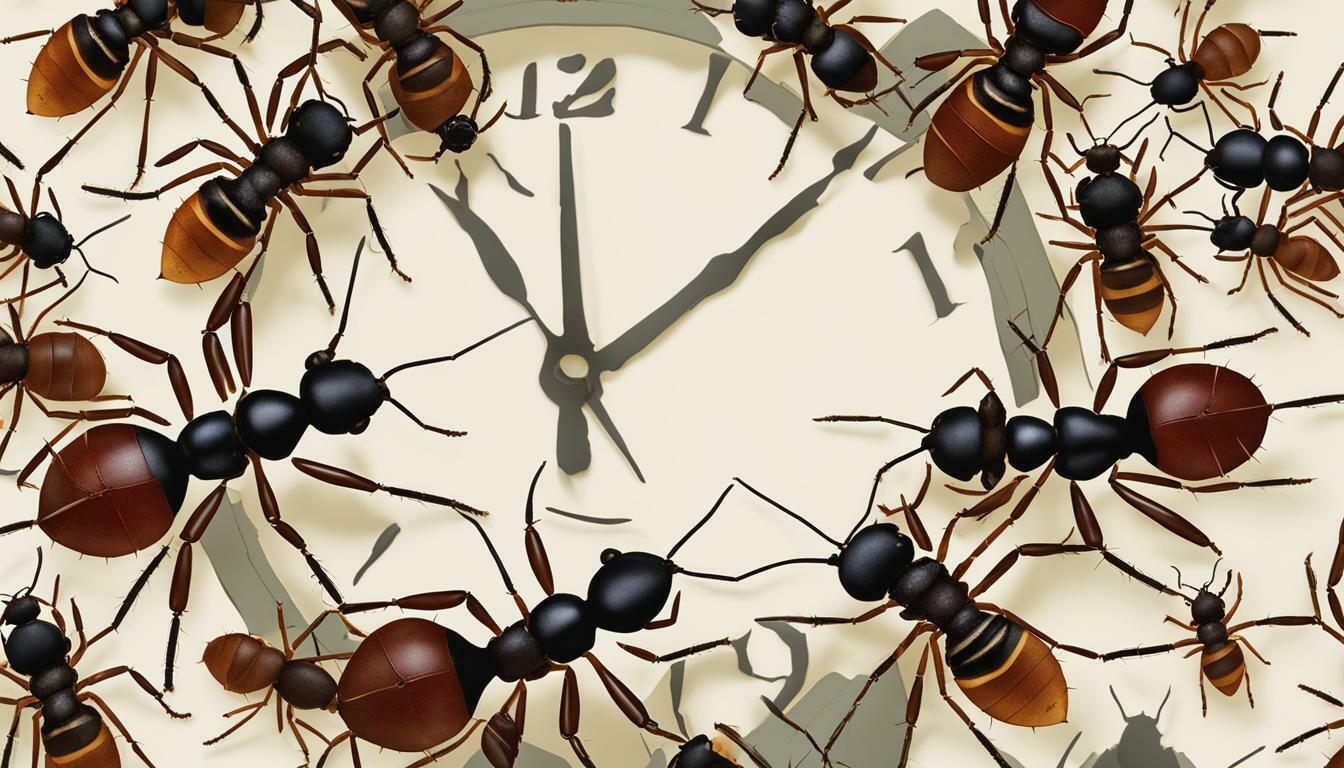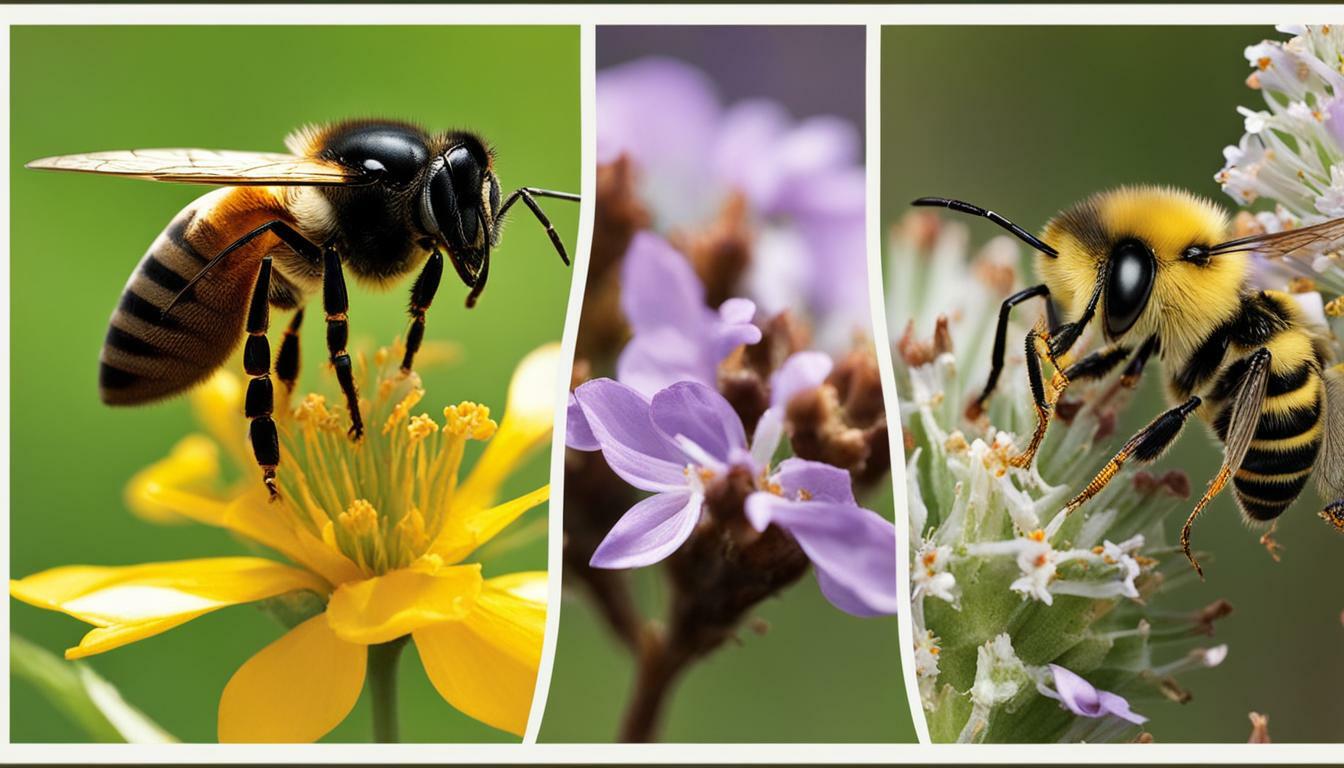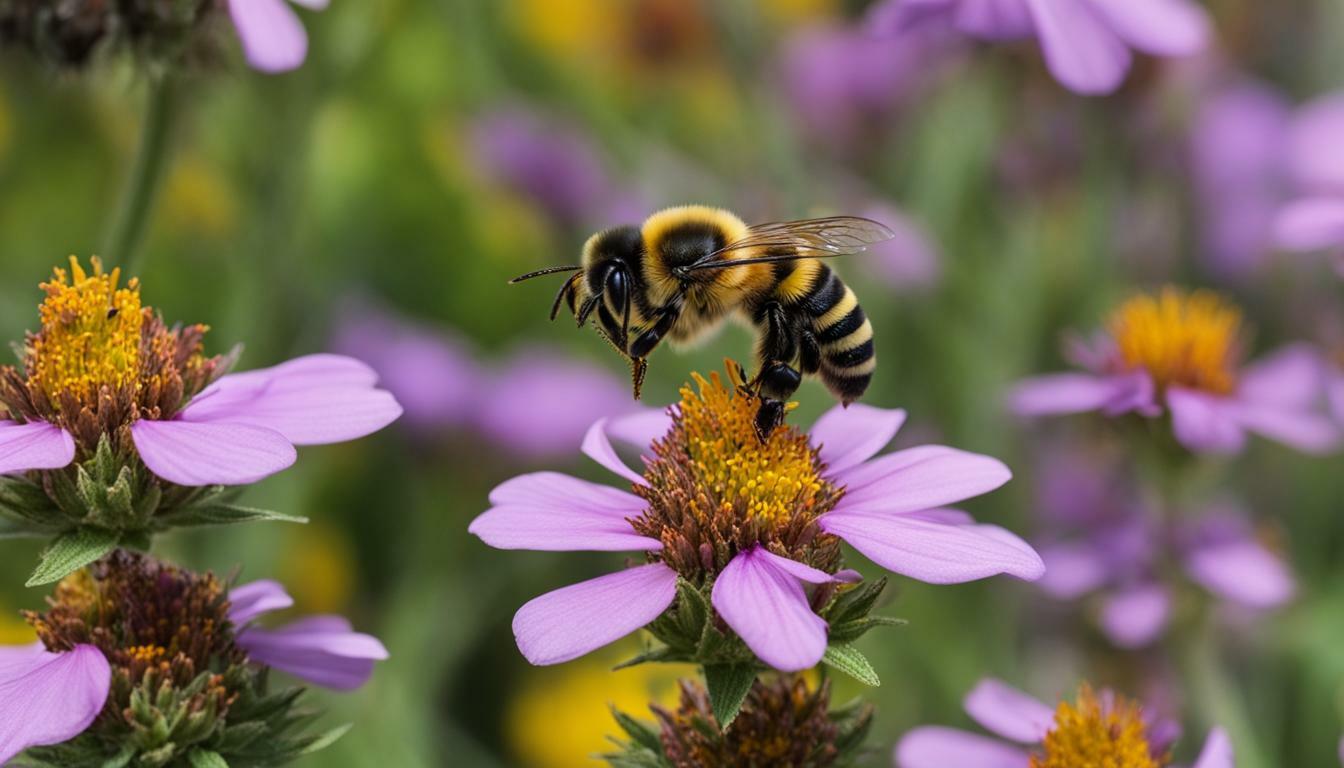Welcome to the world of ants, where every individual plays a unique and integral role in maintaining the ant colony’s sustainability. Among these impressive insects, two types of ants that stand out are worker ants and queen ants.
While they may seem similar at first glance, worker and queen ants are entirely different in terms of their physical characteristics, lifespan, and behavior. Understanding these differences can give us a comprehensive understanding of the intricate social hierarchy that governs ant colonies.
Key Takeaways
- Worker ants and queen ants play unique yet critical roles in the ant colony.
- The physical characteristics, lifespan, and behavior of worker ants and queen ants differ significantly.
- Understanding the differences between worker ants and queen ants deepens our appreciation for the complex social structure of ant colonies.
Characteristics of Worker Ants
Worker ants are the backbone of the ant colony, performing a variety of essential tasks. These ants possess distinct physical attributes that enable them to carry out their duties effectively, such as small size, strong mandibles, and a segmented body structure.
The roles of worker ants are integral to maintaining the ant colony hierarchy and social structure. They are responsible for tasks such as foraging for food, caring for the queen and offspring, and defending the colony against intruders. In addition, worker ants contribute to the division of labor within the colony, as the tasks they perform are often specialized according to their age and experience.
| Task | Description |
|---|---|
| Foraging | Worker ants search for food sources outside of the colony and bring them back to share with others. |
| Caring for the Queen and Offspring | Worker ants tend to the queen, ensuring she is well-fed and cared for. They also care for the eggs and larvae, ensuring they receive the proper nutrients and protection. |
| Colony Defense | Worker ants protect the colony from predators and other intruders, using their strong mandibles and stingers to ward off threats. |
The hierarchical structure of the ant colony relies heavily on the roles of worker ants. They form the majority of the colony’s population, and their contributions play a crucial role in ensuring the colony’s survival and success.
Characteristics of Queen Ants
Queen ants hold a unique and essential role in the ant colony. They are the only ants capable of reproducing and establishing the ant caste system. Physically, they differ from worker ants, with a larger thorax and abdomen, allowing them to carry and lay eggs. Most queen ants have wings, which they shed after establishing a new colony.
The queen ant’s primary responsibility is to lay eggs, ensuring the colony’s growth and sustainability. They can lay hundreds to thousands of eggs per day, which the worker ants care for and tend to until they hatch into adult ants. Queen ants also emit pheromones that regulate the behavior and development of the other ants in the colony, contributing to their vital leadership role.
The ant caste system is established by the queen ant. The first eggs laid by the queen become worker ants, while later eggs become males or new queens, depending on the colony’s needs. The new queens will eventually leave the colony to mate and establish new colonies, continuing the life cycle of the ant species.
Lifespan of Worker and Queen Ants
The difference between worker and queen ants extends beyond their roles and behavior. The lifespan of each type of ant significantly varies, reflecting their distinct physiological functions and contributions to the colony.
Worker ants have a much shorter lifespan than queen ants, typically living for a few months to a year. This limited lifespan is due to the physical demands of their job, which can include foraging, caring for larvae, and maintaining the nest. Worker ants often sacrifice their own well-being for the good of the colony, which can result in a shorter lifespan.
In contrast, queen ants can live for several years, with some species living up to 30 years. Queen ants have a less physically demanding role in the colony, primarily focusing on reproduction and laying eggs. The longevity of queen ants is crucial for the survival of the ant colony, as they are responsible for producing new generations of workers and ensuring the colony’s sustainability.
It is important to note that the lifespan of worker and queen ants can vary depending on environmental factors and species. Still, the critical role that the lifespan of each type of ant plays in the functionality and success of the ant colony remains constant.
Behavior of Worker and Queen Ants
The behavior of worker and queen ants differs significantly, reflecting their respective roles and responsibilities within the ant colony. Worker ants spend most of their lives performing various tasks like foraging, nest maintenance, and brood care. Conversely, queen ants’ primary aim is to reproduce and establish a new colony.
Worker ants are highly organized and work collaboratively, utilizing a sophisticated communication system. They communicate through pheromones, touch, and sound, allowing them to coordinate their tasks effectively. For instance, when a food source is detected, a worker ant will lay a pheromone trail for other workers to follow, leading them to the food source.
In contrast, queen ants are solitary and rarely leave the nest, except during the mating process. They produce a chemical substance that maintains the social order and structure within the colony, which suppresses other females’ ability to reproduce. Queen ants also have longer lifespans than worker ants, some living up to 30 years.
Defense Mechanisms
Worker and queen ants also differ in their defense mechanisms. Worker ants are responsible for protecting the colony against predators, and they will fiercely defend their nest and queen. They can attack their enemies in large groups, biting or stinging them with their strong mandibles or stingers.
Conversely, queen ants rely on their workers for defense and have reduced physical abilities compared to their worker counterparts. They possess a hardened exoskeleton that protects them from physical harm but are unlikely to engage in direct combat with predators.
The distinct behavioral patterns of worker and queen ants help maintain the ant colony’s functionality and success. Understanding these differences deepens our appreciation for the intricate social structure and hierarchy in the fascinating world of ants.
Conclusion
In conclusion, understanding the difference between worker and queen ants provides insight into the fascinating world of ants. The hierarchical social structure and roles that each type of ant plays within the colony are critical to its success. Worker ants are the backbone of the colony, performing essential tasks such as foraging, communication, and defense mechanisms. In contrast, queen ants hold a unique and vital position in the establishment and maintenance of the ant caste system and the reproductive process.
Furthermore, the lifespan and behavior of worker and queen ants differ due to their distinct roles and physiological functions. Worker ants have a shorter lifespan than queen ants due to their constant physical activity, while queen ants can live for several years. Additionally, their behaviors reflect their respective responsibilities within the colony, highlighting how intrinsically linked they are to the overall functionality and sustainability of the ant colony.
In essence, understanding the difference between worker and queen ants is the key to appreciating the intricate social structure and hierarchy within an ant colony. So, the next time you observe ants, take a moment to appreciate the complex and essential roles that each type of ant plays in their society.
FAQ
Q: What is the difference between worker and queen ants?
A: Worker ants and queen ants have distinct roles within the ant colony. Worker ants are responsible for tasks such as foraging, building and maintaining the nest, and taking care of the queen and her offspring. Queen ants, on the other hand, are responsible for laying eggs and ensuring the colony’s reproductive success.
Q: What are the characteristics of worker ants?
A: Worker ants are typically smaller in size compared to queen ants. They have strong jaws for tasks like food collection and nest construction. They are also hardworking and industrious, meticulously carrying out their assigned roles to support the colony’s needs.
Q: What are the characteristics of queen ants?
A: Queen ants are usually larger than worker ants and have a distinct body shape. They have specialized reproductive organs and can lay thousands of eggs in their lifetime. Queen ants also release pheromones that help maintain the social structure and hierarchy within the ant colony.
Q: What is the lifespan of worker and queen ants?
A: Worker ants have a relatively short lifespan, usually ranging from a few weeks to a few months, depending on the ant species. In contrast, queen ants have a significantly longer lifespan, which can range from several months to several years.
Q: How do the behaviors of worker and queen ants differ?
A: Worker ants are primarily responsible for tasks such as foraging, nest maintenance, and defending the colony against threats. They communicate through chemical signals called pheromones. Queen ants, on the other hand, focus on reproduction and are typically less active outside the nest. They communicate with the workers through pheromones and physical contact.



